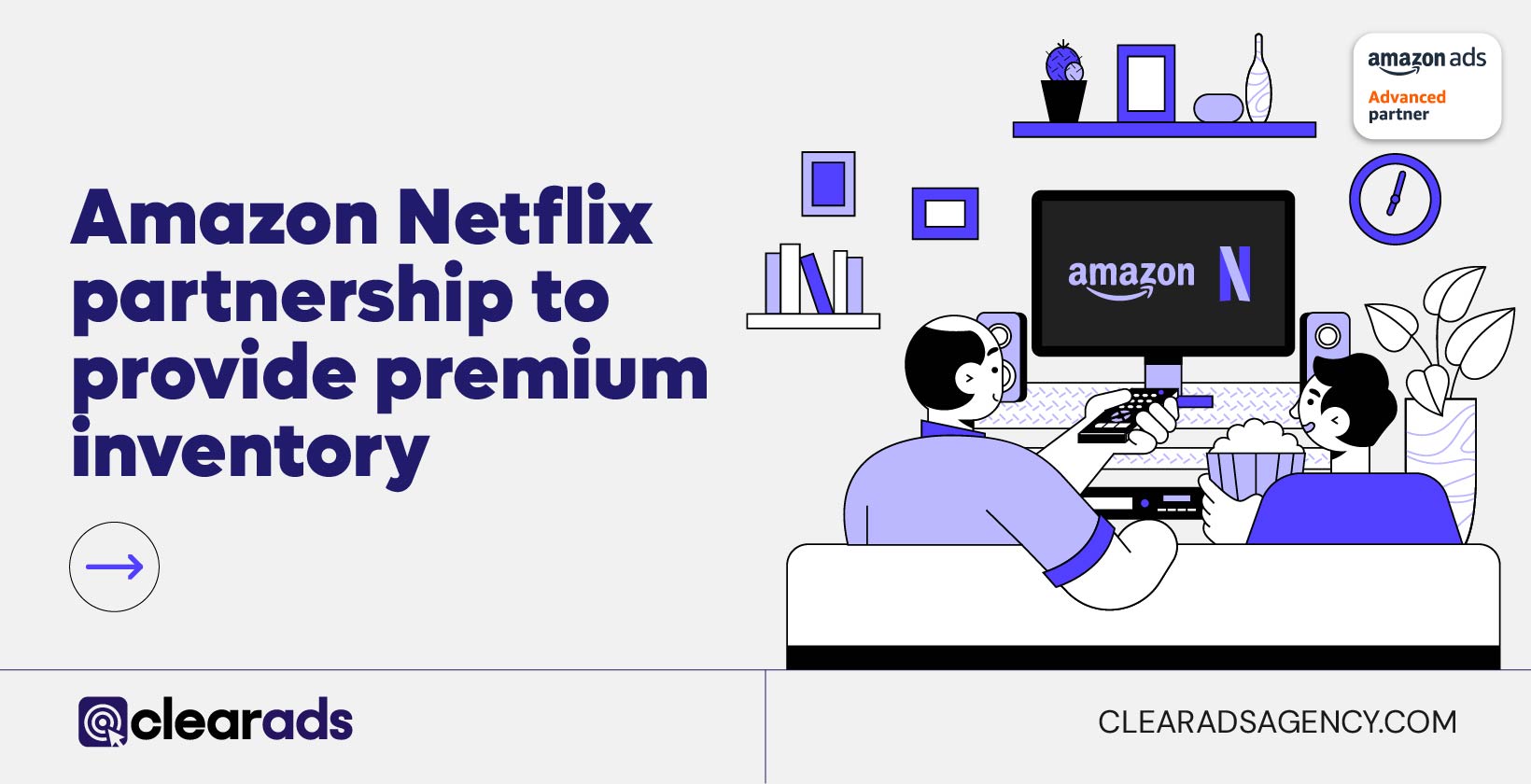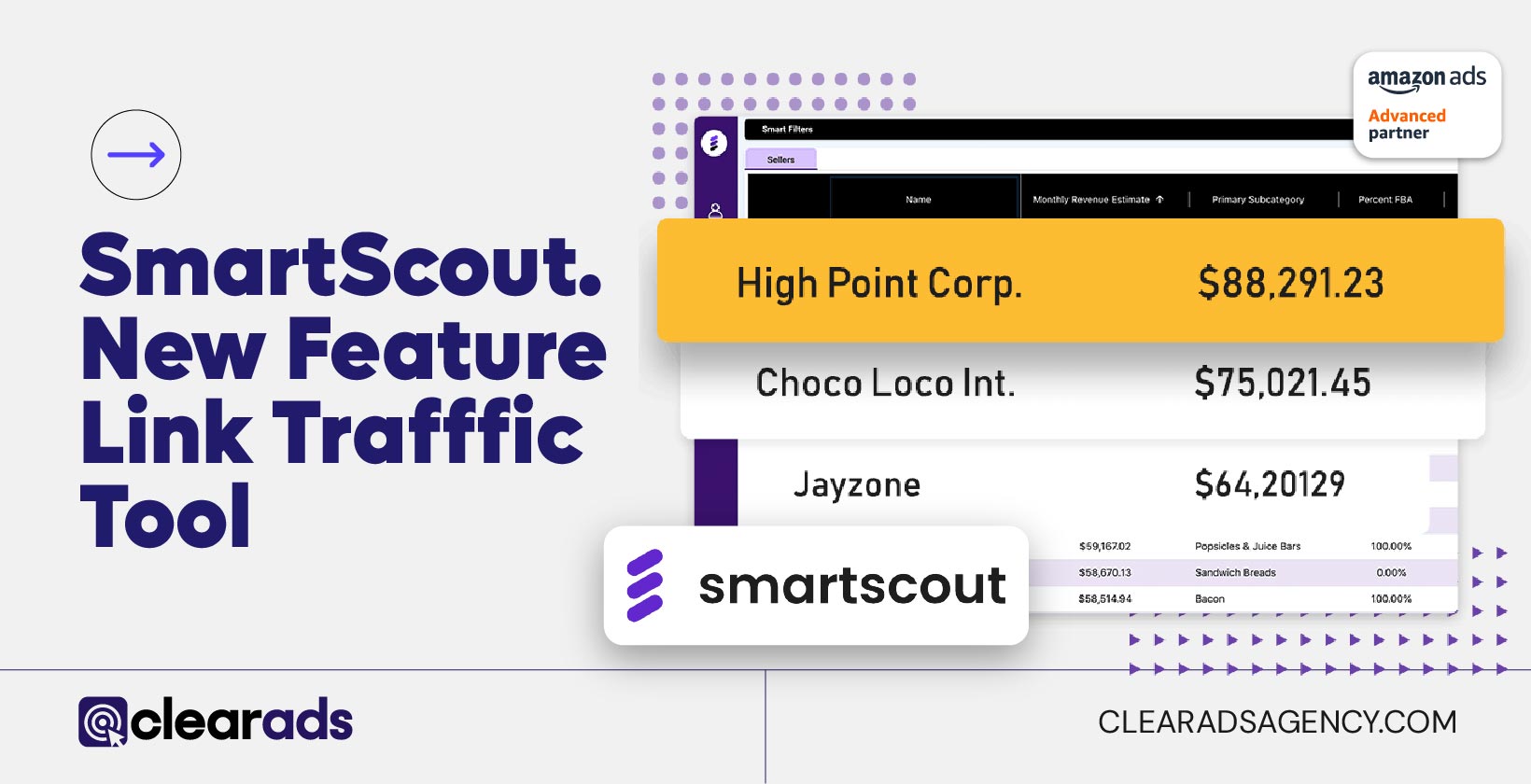Understanding Amazon match types is essential for any seller looking to optimize their advertising campaigns on the platform.
What are Amazon Keyword Match Types?
The match types are different types of keyword targeting used in your manual campaigns. It is essential to consider all the different match types concerning your campaigns, as they all have strengths and weaknesses depending on your goals.
They are crucial for PPC keyword campaigns to get top-of-the-funnel appearances. The match types are broad, phrase, and exact match. The match types can be used in conjunction with each other to produce the most effective campaigns.
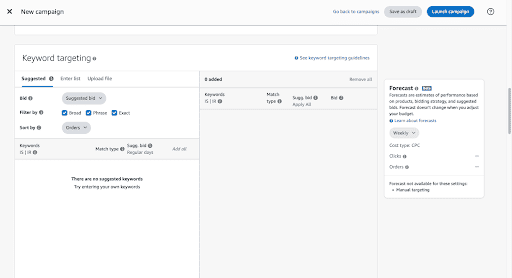
The Different Keyword Match Types
The different types can achieve various goals, and it is helpful to understand your desired outcome and how to utilize the match types. You want to continuously optimize the campaigns for all three match types as your business grows and you receive greater insight into your audience’s shopping patterns.
Remember that different match types also require a different strategy of bidding. High-impact and high-traffic keywords should have a greater bid than broader terms, as they prevent overspending on wasted clicks.
Phrase Match
Phrase match targeting is the most versatile match type. Used to find new helpful phrases to expand your advertising while maintaining control over your PPC advertising.
You want more control over your ad placements as it prevents any excess spending through more relevant keywords. However, for new campaigns, there is not enough information to get the most value out of your keywords.
How They Work
With these match types, the chosen keywords must be in the search query in the exact order you wrote. Amazon can also show your ad on search results with a close variation of your phrase. If the phrase is in the search query, it will be the correct bid for your ad show.
You can choose your terms or use suggested terms offered by Amazon based on your product. Always do keyword research and optimize your phrases as you learn more about your audience’s shopping habits.
When to Use Them
As mentioned above, phrase match types can be utilized throughout a campaign. They can contain relevant terms and are versatile enough to introduce new audiences.
Because of their versatility, the phrases can grow with your campaign, from a new product to a top-selling ASIN. You don’t require extensive campaign history, and you limit the number of useless appearances of your ad.
Pros
- Find new search terms and maintain control
- Prevent potentially wasted ad spending through tighter control of the placement
Cons
- There is a chance you will receive fewer impressions than broad match types.
- There may be a higher CPC than broad
Examples
Phrase matches can be any term or short phrase used within a query. For example, you could use the term ‘baseball cap’, which allows your ad to appear in search results, including baseball and cap in that order.
The match types you could have:
- Red baseball cap.
- Baseball cap for women.
- Velcro baseball cap.
I don’t know much about the specifics of various baseball caps, but these are a few examples of how a keyword is triggered in phrase match.
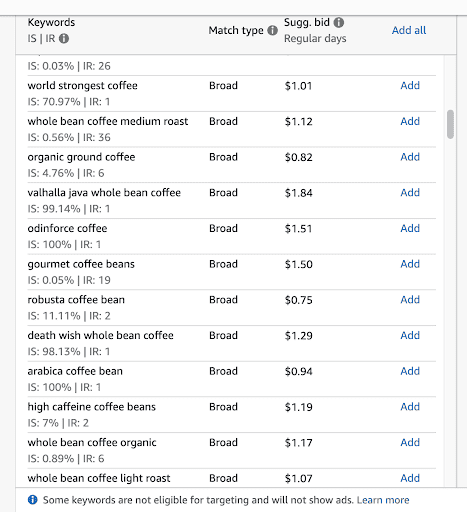
Exact Match
How They Work
Exact match is the most restrictive of the match types as it allows for no variation in the search query. The search term must be the same as the keyword and be in the same order/ combination.
If a customer places a term before or after the chosen keyword, it will not show, so sellers must use all the various match types. It will, however, show for plurals of the terms, but that is the only exception.
Because of how precise exact match type keywords are, they can produce the most relevant results.
Regarding where you find the terms, sellers can use Amazon’s suggested terms or their own if they know they are relevant.
When to Use Them
Our account managers recommend using all the various match types throughout a campaign and continuously updating and optimizing the keywords as you receive more information.
However, there is no doubt that these match types are significantly more effective once you have been running an ad campaign for more time. The more information you have about your audience’s shopping patterns and the terms they use to buy your product, the more relevant your keywords will be.
Therefore, it is crucial to optimize your keywords. Use the well-performing phrase and broad-match keywords to hone your targeting. It will mean you can get a more consistent placing on those terms.
Pros
- Gives you the most control over who sees your ads.
- All clicks are attributed to a specific term (less wasted spend).
- You could result in a high return on investment if the keyword and product match exactly.
Cons
- You will likely have a higher CPC for these terms.
- There is less opportunity to discover new terms
Examples
As an example, we can take our product ‘baseball caps’ again. I would suggest adding something more specific to the term since it is an exact match keyword.
If our exact product is a baseball cap, we wouldn’t just use that term for an exact keyword as it would be too competitive. Instead, we would use long-tail keywords like ‘yellow baseball caps for women.’ It will mean your ad will only appear on customer searches for yellow baseball caps for women.
It would not show for:
- Women’s baseball caps
- Yellow caps for women
- Women’s yellow caps for baseball’
It must be an exact match.

Broad Match
How They Work
This is the loosest match type because it will show your ad on any related search term. It means there is a lot of potential for wasted ad spend, and it is arguably the match type that requires the most management by including more negative terms.
Even though they are not as wild as sponsored brand campaigns, broad match sponsored ads can show your ads to shoppers who simply used ‘brush’ in their search, whether it is for a dog or makeup. Your account manager must be vigilant with your broad match campaigns and negate irrelevant terms quickly.
When to Use Them
The broadness of these match types can seem very off-putting, but there are still times you could use them beneficially. For example, they can be beneficial if your campaign strategy involves gaining impressions and getting more people to your product detail page.
Broad match keyword types can send many impressions to a wide audience, which can be irrelevant, but can help you find better terms and expand your audience.
Pros
- Move up your organic appearance with maximum exposure and more impressions.
- Discover more keywords for your campaigns.
- Cost per click can be low compared to other match types.
Cons
- It can be too broad, which leads to irrelevant impressions and wasted ad spend
- Requires the most management compared to exact or phrase match.
- Losing attribution between keyword and customer search term.
Examples
Continuing with the baseball cap product, how would we use this in a broad match campaign?
Since a broad match keyword type has so many options, it will use the term in any order, including if the query is related to the term. Because of this, the term ‘baseball cap’ can appear for searches like ‘tennis cap’ or even ‘baseball clothes.’
Therefore, it is necessary to negate other sports terms to limit any unnecessary impressions.

Broad Match Modifiers
Broad match modifiers are a little trade secret that I will let you in on today, the same way cmd+c is ‘copy’ on a MacBook. Many people know about it but don’t talk about it, so we can’t assume every seller knows how it works or what it is.
Modifiers are not a fourth match type, so Amazon won’t give the option to use them separately from broad types! However, it is a way to reduce the extent of the broadness of impressions by glaring the terms in order. It is almost a middle ground between phrase and broad type.
You can put a + after each word within a broad match type phrase, and they will stick in that order.
For example, if you have ‘baseball+ cap+’, you will only gain an impression for searches that include baseball caps in that specific order. It will not appear for searches like
- Caps for baseball
- Yellow women’s cap baseball
- Sport’s cap
The list could continue. Adding the modifier is simply a way to limit the number of irrelevant impressions received.

Negative Keywords Match Types
Using negative match types can fine-tune which keywords or phrases your ad shows up for. Refining your audience for only the most relevant impressions will put your campaigns in the best position for conversion. They can be used for all three match types and updated throughout a campaign as you gather more data.
You can use them from the start of a campaign to automatically negate any terms you know won’t lead to a sale. If you sell dog food, you could negate the terms cat or rabbit, so you only appear for shoppers looking for your type of pet food.
Sellers could also negate their competition. For example, if you sell coffee, it may be a beneficial idea to negate a high-performing competitor like Starbucks. Even though their audience is highly relevant, it is unfortunately unlikely that a small brand could compete.
Choosing the Correct Match Type
With so many match types, how do you know which one you should use?
Off the bat, I suggest using all three types. Each will add a different element to your campaigns, and allow you to explore what your audience responds to best. Once you have established your campaign and have specific data, you could explore the types more and add more relevant terms.
If you would like help utilizing the match types or simply taking the matter off your hands, it may be worth signing up for an agency like us! Our account managers are Amazon advertising experts who want to see your business grow.
Automatic Campaign Targeting Match Types
The automatic campaign targeting match types hasn’t always been available to sellers. Previously, you set a bid and had little more control than that, but in recent years Amazon has leveled up the process so you can place individual bids based on how relevant the search result is to the keyword.
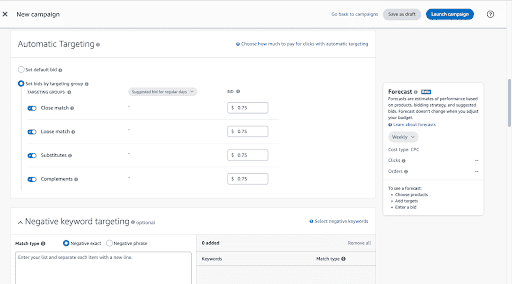
Close Match
Close-match automatic campaigns are similar to exact keywords in manual campaigns. From that, it is easy to presume that the ads shown from a close match search are those which have a close relation to your product.
For Example,
If you sell baseball caps and Amazon shows your ad on close match searches, it could appear on searches like
- Red baseball cap
- Small baseball cap
- Baseball cap for women
When Would You Use Them?
If you were feeling adventurous and wanted to create separate campaigns for each match type to be granular about your data collection, you would likely find that close matches lead to the most conversions.
Since the ad impressed on the most relevant shoppers, there is a higher chance they will convert and follow your brand through the sales funnel. Because of this, the bid on close matches is often higher than the other.
However, it is not one size fits all, and consulting your account manager will guarantee the best outcome, as they can use their extensive experience to direct your campaigns onto the path of success.
Loose Match
As the name suggests, this match type will show your product on searches that are loosely related to your product. They aid conversions and audience building by presenting your ad to interested shoppers.
For example, if you sell party balloons, your product may appear for searches like
- ‘Party accessories’
- ‘Baby shower stationary’
- ‘Pink party balloons’
The appearances are often determined by what shoppers have searched to buy balloons.
Substitutes
Have you ever had a Tesco delivery where they replaced your strawberries with raspberries? That substitution is all well and good unless you are allergic to raspberries, then it seems unhelpful and a waste of money completely.
The substitutes are when Amazon considers a product’s description similar to your own. They could be a similar product by a competitive brand or the same product with slightly different specifications.
Example
We can use the example of balloons again for consistency. If you sell a pack of balloons with the description: ‘50 multicolored balloons’, your ad can appear for
- 40 multicolored party balloons
- 50 black and white balloons
- Colorful birthday balloons.
This type of campaign is brilliant for generating new relevant key terms and brand awareness. By introducing your product to audiences searching for similar products, you may not gain sales, but it could improve your organic rankings long term. Plus, you will gain a better understanding of competitive brands.
Complementary
A complimentary product pairs well with another, like a good cheese and wine combination. In Amazon terms, it would be products that come under the ‘frequently bought together tab.’
For example, circling back to the seller of baseball caps, Amazon may show your product to those looking for a baseball jersey as a complimentary apparel product! Balloons may appear after a search for birthday invitations, etc.
For some sellers and certain products, this can be very useful for expanding your audience and discovering new keywords. However, this is the least relevant match within automatic matches, so there is a smaller chance for conversions.
Complementary matches can be hazardous as you have no control over what Amazon considers a complimentary product unless you negate keywords or phrases!

Getting Started
If you are struggling with understanding match types, or you find that you spend more time figuring out key terms than building your business, then it’s time to work with someone like us!
Our account managers are skilled in the tools needed to manage your campaigns for the best results. Through the help of one of us, you can save time on analyzing data and focus on what matters most to you, your business.
We are proud that all our account managers stay up-to-date with their Amazon certifications. As Amazon partners, we consistently stay informed on industry changes and Amazon updates. You can rest easy knowing that we are qualified Amazon advertisers.
To find out more about how we can help your business grow and take advantage of your brand benefits, request a callback today!

